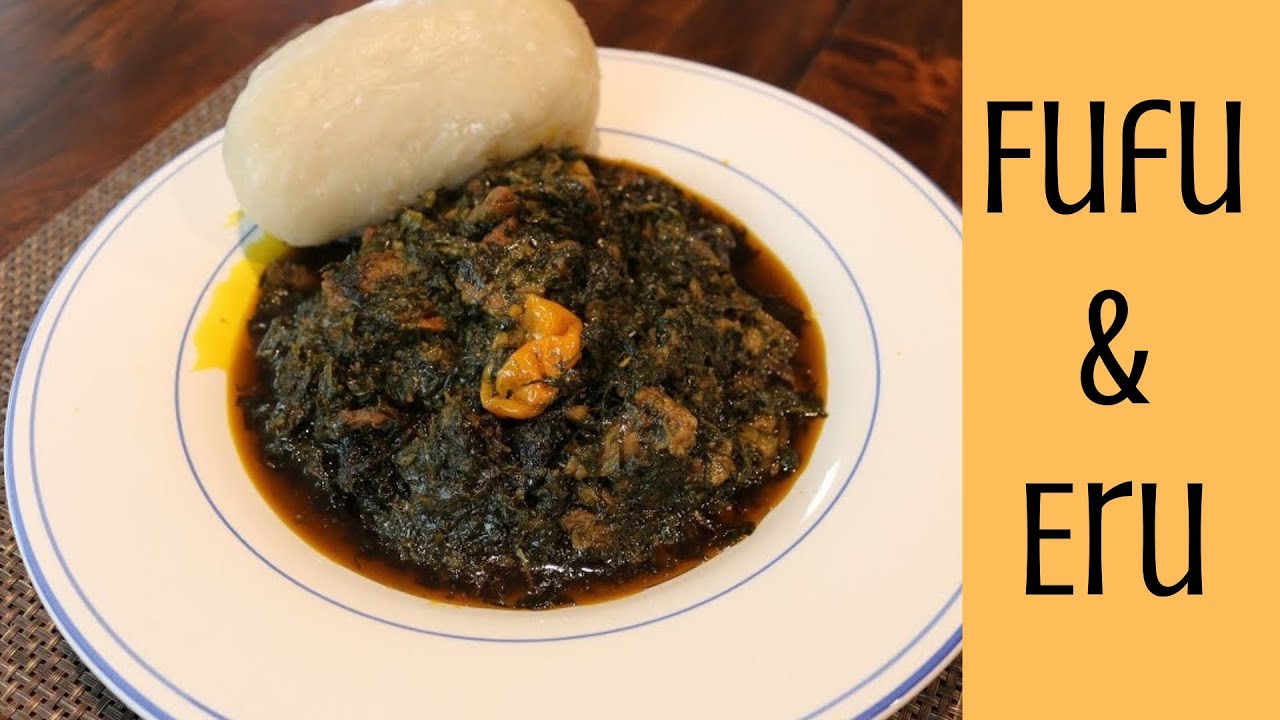Eru Soup with Water Fufu: A Step-by-Step Guide to Authentic Cameroonian Cuisine

Eru Soup is a beloved dish from Cameroon, renowned for its vibrant flavors and nutritious ingredients. This traditional stew, made from finely shredded eru leaves and served with water fufu (cassava fufu), is a must-try for anyone eager to explore authentic African culinary traditions. In this guide, we’ll walk you through every step—from ingredient preparation to final plating—ensuring you create a delicious, genuine Cameroonian meal from scratch.
Table of Contents
- What is Eru Soup?
- Cultural Significance
- Essential Ingredients
- Step-by-Step Preparation
- Cooking Tips and Variations
- Serving Suggestions
- FAQs on Eru Soup
- Conclusion
What is Eru Soup?
Eru Soup is a hearty, nutrient-dense stew made primarily from the leaves of the eru plant (Gnetum africanum), which are finely shredded and slowly cooked with spices, meats, or fish. Traditionally, it is paired with water fufu—a smooth, starchy paste made from boiled cassava—making it a filling and satisfying meal. This dish is cherished for its unique balance of earthy, slightly bitter greens and the rich, savory flavor of the accompanying ingredients.
Cultural Significance
Eru Soup is more than just a dish—it’s a symbol of Cameroonian culinary heritage. Commonly enjoyed at festive gatherings and family celebrations, its preparation is often a communal activity that highlights the traditions and resourcefulness of local communities. The dish exemplifies the fusion of indigenous ingredients with time-honored cooking methods, celebrating the diversity and richness of Cameroonian culture.
Essential Ingredients
For an authentic Eru Soup with water fufu that serves 4–6 people, gather the following ingredients:
For the Eru Soup:
- Eru Leaves (Gnetum africanum): 500 g, washed and finely shredded
- Protein (Optional): 500 g of smoked fish, beef, goat, or a mix of dried shrimp and/or crayfish
- Palm Oil: 3–4 tablespoons (for color and richness)
- Onions: 2 medium, finely chopped
- Garlic: 3–4 cloves, minced
- Fresh Ginger: 1 tablespoon, grated
- Scotch Bonnet or Red Chili: 1 (optional, finely chopped for heat)
- Bouillon Cubes: 1–2 (preferably chicken or beef flavor)
- Salt and Pepper: To taste
- Water or Stock: 2–3 cups, as needed
For the Water Fufu:
- Cassava: 1 kg, peeled and cut into chunks
- Water: For boiling
- Salt: A pinch
Step-by-Step Preparation
Preparing the Eru Leaves
- Clean and Shred:
Rinse the eru leaves thoroughly to remove any dirt. Tear or shred the leaves finely by hand or use a food processor on pulse mode. Proper cleaning is key to reducing any inherent bitterness.
Cooking the Protein and Aromatics
- Prepare the Protein:
If using smoked fish, dried shrimp, or meat, rinse and cut them into bite-sized pieces. In a large pot, heat the palm oil over medium heat. Sauté the chopped onions, minced garlic, and grated ginger until the onions become soft and translucent. If you like extra heat, add the finely chopped scotch bonnet pepper. - Incorporate Protein:
Add the protein to the pot and sauté for a few minutes to allow it to release its flavors. Crumble in the bouillon cubes and season with salt and pepper.
Stewing the Eru Soup
- Combine with Eru Leaves:
Stir in the shredded eru leaves gradually. Mix well so that the protein and aromatics are evenly distributed throughout the leaves. - Add Liquid and Simmer:
Pour in the water or stock to achieve your desired consistency. Bring the mixture to a simmer, then cover and let it cook over medium-low heat for 20–30 minutes. This slow simmering allows the flavors to meld and the eru leaves to soften perfectly. - Adjust Seasoning:
Taste the soup and adjust the salt, pepper, or additional bouillon as needed. The result should be a rich, deeply flavorful stew with a harmonious blend of the earthy eru and savory spices.
Making Water Fufu
- Boil the Cassava:
In a separate large pot, add the cassava chunks and cover with water. Boil until the cassava is soft and easily mashed (about 25–30 minutes). - Pound into Fufu:
Drain the cassava and transfer it to a large mortar or a sturdy bowl. Pound or mash the cassava until smooth and stretchy. You may add a little warm water or a pinch of salt to help achieve a consistent, dough-like texture. - Shape the Fufu:
Once pounded, shape the water fufu into smooth balls or serve it as a soft, pliable paste alongside the Eru Soup.
Cooking Tips and Variations
- Texture Balance: For a smoother consistency, process the eru leaves more finely. If you prefer a chunkier texture, leave them slightly torn.
- Protein Options: While traditional recipes often include smoked fish or dried shrimp, you can experiment with beef, goat meat, or even a vegetarian version with mushrooms.
- Spice Level: Adjust the amount of scotch bonnet pepper to suit your taste. Remove the seeds for a milder heat.
- Consistency: If the soup seems too thick, add a bit more water or stock; if too thin, simmer uncovered to reduce.
Serving Suggestions
Eru Soup is best enjoyed piping hot, paired with water fufu. Here are some popular serving ideas:
- Traditional Serving: Scoop a ball of water fufu and dip it into a generous serving of Eru Soup.
- Accompaniments: Serve alongside a fresh vegetable salad or a side of steamed rice for extra texture.
- Garnish: Sprinkle chopped fresh herbs such as parsley or basil over the soup for an added burst of color and flavor.
Frequently Asked Questions (FAQs)
Q1: What makes Eru Soup unique?
A1: Eru Soup is unique due to its use of eru leaves (Gnetum africanum), which have a distinct earthy flavor. The dish is enriched with smoked or dried protein and balanced with traditional spices, resulting in a nutritious, flavorful stew.
Q2: Can I make Eru Soup vegetarian?
A2: Absolutely! Simply omit the protein and enhance the flavor with extra aromatics and perhaps some mushrooms or tofu. The eru leaves and spices create a robust, satisfying dish on their own.
Q3: How do I get the perfect texture for water fufu?
A3: Boil the cassava until it’s soft enough to mash easily. Then, pound it until it becomes smooth and stretchy. Adding a little warm water during pounding can help achieve a consistent dough-like texture.
Q4: How long should Eru Soup simmer?
A4: Let the soup simmer for 20–30 minutes, allowing enough time for the flavors to meld and for the eru leaves to become tender.
Conclusion
Eru Soup with water fufu is a testament to the rich culinary traditions of Cameroon—a nourishing and flavorful dish that brings together the earthy taste of eru leaves with the comforting texture of cassava fufu. By following this detailed guide, you can recreate an authentic Cameroonian meal that is perfect for festive gatherings or a hearty family dinner. Enjoy the process of preparing this traditional dish and share the authentic taste of Cameroon with your loved ones!
Feel free to share your thoughts and variations in the comments below. Enjoy your culinary journey into Cameroonian flavors!



